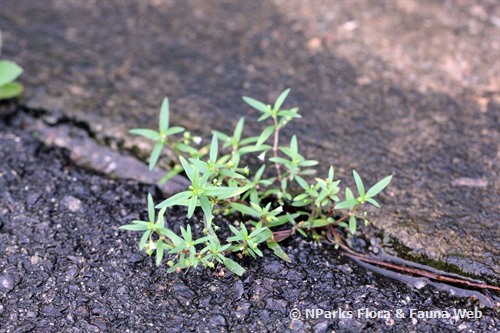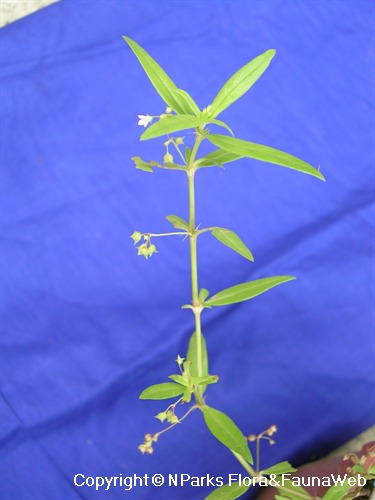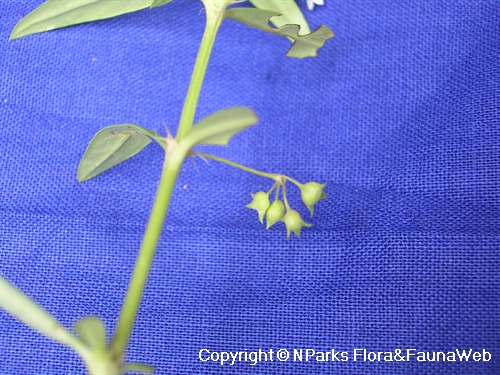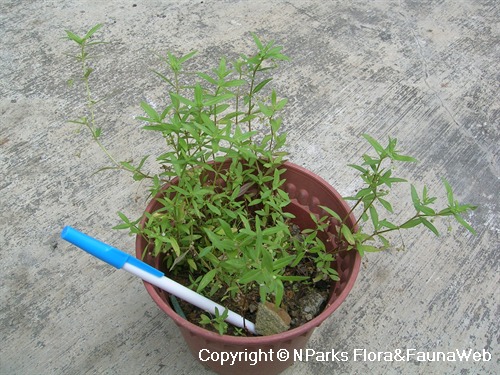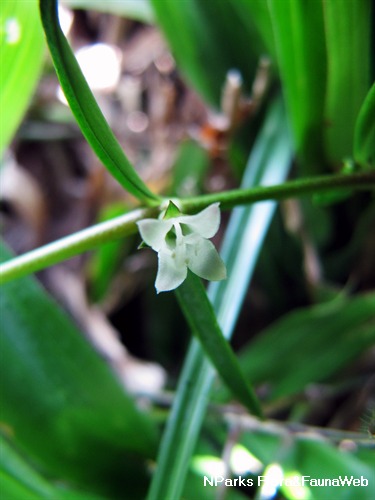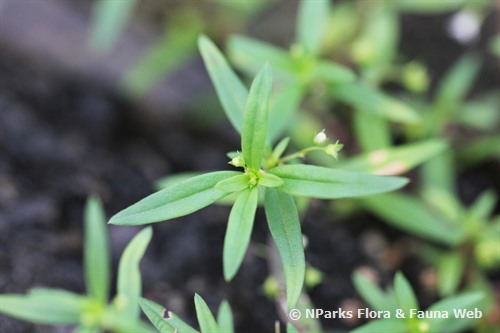
Back
Hedyotis corymbosa (L.) Lam.
| Family Name: | Rubiaceae |
| Synonyms: | Oldenlandia corymbosa L. |
| Common Name: | Two-flowered Oldenlandia, Flat-top Mille Graines, Old World Diamond-Flower |
Name
Classifications and Characteristics
| Plant Division | Angiosperms (Flowering Seed Plants) |
|---|---|
| Plant Growth Form | Herbaceous Plant |
| Mode of Nutrition | Autotrophic |
| Maximum Height | 0.3 m to 0.4 m |
Biogeography
| Native Distribution | Tropical & Southern Africa, India, Tropical America |
|---|---|
| Native Habitat | Terrestrial |
Description and Ethnobotany
| Growth Form | Perennial herb with an erect growth habit. |
|---|---|
| Foliage | Paired leaves are lanceolate with smooth leaf edges. |
| Flowers | Small, white flowers are composed of 4 narrowly ovate petals and 4 stamens. |
| Fruit | Light green fruits are approximately round with 4 evenly distributed horns. |
| Ethnobotanical Uses | Food (Herb or Spice) Medicinal: In Chinese and Indian traditional medicine, this species is used to treat liver disorders. A study by Sadasivan et al. (2006) showed that whole plant extracts were effective against liver damage in mice. |
Plant Care and Propagation
| Light Preference | Full Sun |
|---|---|
| Water Preference | Moderate Water |
| Propagation Method | Seed |
Foliar
| Foliage Retention | Evergreen |
|---|---|
| Mature Foliage Colour(s) | Green |
| Mature Foliage Texture(s) | Glossy / Shiny |
| Foliar Type | Simple / Unifoliate |
| Foliar Attachment to Stem | Petiolate |
| Foliar Shape(s) | Non-Palm Foliage |
| Leaf Area Index (LAI) for Green Plot Ratio | 4.5 (Shrub & Groundcover - Dicot) |
Floral (Angiosperm)
| Flower Colour(s) | Pink, White |
|---|---|
| Flower Grouping | Cluster / Inflorescence |
| Flower Location | Axillary |
| Inflorescence Type | Cyme |
Image Repository
Others
| Master ID | 768 |
|---|---|
| Species ID | 5238 |
| Flora Disclaimer | The information in this website has been compiled from reliable sources, such as reference works on medicinal plants. It is not a substitute for medical advice or treatment and NParks does not purport to provide any medical advice. Readers should always consult his/her physician before using or consuming a plant for medicinal purposes. |

